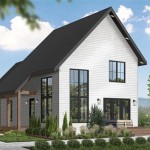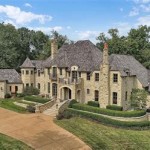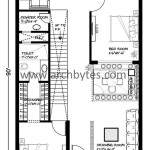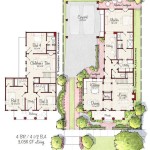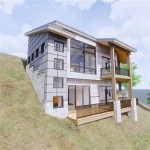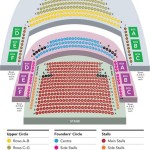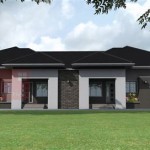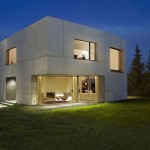Kerala House Designs and Floor Plans in 2018: A Detailed Overview
The year 2018 witnessed a significant evolution in Kerala house designs and floor plans, reflecting a blend of traditional aesthetics and modern functionalities. The architectural landscape in Kerala has always been deeply rooted in its climate, culture, and available resources. The designs prevalent in 2018 showcased a conscious effort to optimize natural light and ventilation, conserve energy, and utilize locally sourced materials, all while catering to the changing lifestyles of the residents. This article delves into the key aspects of Kerala house designs and floor plans that defined the architectural trends of 2018.
Kerala's architectural identity is strongly associated with its pitched roofs, courtyards (nadumuttam), and the use of wood. While these elements continued to be important in 2018, there was a noticeable shift towards incorporating contemporary materials and design approaches. Concrete gained substantial popularity for its durability and versatility, allowing for the creation of larger, open spaces, while still maintaining the essence of Kerala's architectural heritage. The integration of modern amenities, such as smart home systems and energy-efficient appliances, also became a defining feature of many Kerala house designs during this period.
The floor plans in 2018 also underwent considerable changes. The demand for more compact and functional spaces led to the optimization of room layouts, with an emphasis on maximizing usable area. Open-plan living areas, combining the living room, dining area, and kitchen, became increasingly common, fostering a sense of spaciousness and promoting social interaction within the family. Simultaneously, there was a growing awareness of the importance of privacy, leading to the careful zoning of spaces to separate public and private areas. The following sections will explore some of the critical design principles and features that characterized Kerala house designs and floor plans in 2018.
Emphasis on Natural Light and Ventilation
One of the defining features of Kerala house designs in 2018 was the deliberate focus on maximizing natural light and ventilation. Situated in a tropical climate, Kerala experiences high temperatures and humidity for a significant portion of the year. Consequently, architectural designs have historically prioritized creating comfortable and breathable living spaces. This principle continued to be paramount in 2018, with designers employing various strategies to harness the natural elements.
Large windows and strategically placed ventilators remained crucial for promoting cross-ventilation, allowing air to circulate freely throughout the house. The use of jali work (perforated screens) became increasingly popular, providing both privacy and ventilation while allowing sunlight to filter through, creating interesting patterns and a pleasant ambiance. Courtyards were also incorporated into many designs, not only as aesthetically pleasing features but also as effective mechanisms for natural cooling and lighting. The open-to-sky design of courtyards allows for hot air to rise and escape, while simultaneously drawing in cooler air from the surroundings. The orientation of the house was carefully considered to minimize direct sunlight exposure, particularly on the western facade, further contributing to thermal comfort.
Furthermore, designers frequently incorporated skylights and clerestory windows to bring natural light into areas that might otherwise be dark or poorly lit. These features not only enhance the visual appeal of the interiors but also reduce the reliance on artificial lighting, resulting in energy savings. The use of light-colored paints and reflective surfaces was also a common strategy to maximize the diffusion of natural light within the house. Overall, the emphasis on natural light and ventilation in Kerala house designs in 2018 reflected a commitment to creating sustainable and comfortable living environments.
Integration of Traditional Elements with Modern Aesthetics
Kerala house designs in 2018 successfully integrated traditional architectural elements with modern aesthetics, creating a unique and distinctive style. While embracing contemporary materials and design approaches, designers preserved the cultural heritage and architectural identity of the region. The pitched roof, a hallmark of Kerala architecture, remained a prevalent feature, although often redesigned with modern materials such as clay tiles, metal sheets, or concrete. These roofs served not only as a visual reminder of Kerala's architectural past but also as a practical solution for managing the heavy rainfall that the region experiences.
The use of wood continued to be an integral part of Kerala house designs, although architects often opted for engineered wood or other sustainable alternatives to reduce the environmental impact. Wood was commonly used for doors, windows, roof trusses, and decorative elements, adding warmth and character to the interiors. Traditional motifs and carvings were also incorporated into the designs, albeit with a more subtle and contemporary interpretation. These elements served as a visual link to Kerala's rich artistic heritage, imbuing the houses with a sense of cultural identity.
The nadumuttam, or central courtyard, was another traditional element that found its place in many Kerala house designs in 2018. While the traditional nadumuttam was typically an open space, some designs incorporated a covered courtyard or a landscaped atrium, providing a tranquil and visually appealing indoor space. The integration of vernacular architectural principles, such as the use of locally sourced materials and the orientation of the house to optimize natural light and ventilation, further reinforced the connection to Kerala's architectural heritage. The successful blend of traditional elements with modern aesthetics resulted in homes that were both functional and aesthetically pleasing, reflecting the unique cultural identity of Kerala.
Optimized Floor Plans and Space Utilization
The floor plans of Kerala houses in 2018 were characterized by a focus on optimizing space utilization and creating functional living environments. The increasing cost of land and the changing lifestyles of residents prompted designers to develop innovative floor plans that maximized usable area and catered to the specific needs of the occupants. Open-plan living areas, combining the living room, dining area, and kitchen, became increasingly popular, creating a sense of spaciousness and facilitating social interaction within the family. These open layouts also allowed for greater flexibility in furniture arrangement and utilization of space.
The zoning of spaces was carefully considered to separate public and private areas, ensuring both privacy and functionality. Bedrooms were typically located away from the main living areas, providing a quiet and restful environment. Bathrooms and utility areas were strategically placed to minimize noise and disruption to the living spaces. The inclusion of a dedicated work-from-home space or study room became increasingly common in response to the changing work patterns. These spaces were designed to be quiet, well-lit, and equipped with the necessary amenities to facilitate productivity.
Storage solutions were also an important consideration in the floor plans. Built-in cabinets, closets, and shelving units were incorporated to maximize storage space and minimize clutter. The use of vertical space was also optimized, with high ceilings and loft spaces providing additional storage options. The careful consideration of space utilization and functionality in the floor plans of Kerala houses in 2018 resulted in living environments that were both comfortable and efficient, catering to the evolving needs of the residents. The integration of modern amenities, such as smart home systems and energy-efficient appliances, further enhanced the functionality and convenience of these homes.
The trends observed in Kerala house designs and floor plans in 2018 demonstrate the dynamic interplay between tradition and modernity. The emphasis on sustainable design principles, the integration of cultural elements, and the optimization of space utilization reflect a conscious effort to create homes that are both aesthetically pleasing and functionally efficient. The evolution of Kerala architecture continues, building upon these foundations to create innovative and sustainable living environments for the future.

Unveiling The Elegance Of 2024 A Marvelous Kerala Home Design To Welcome New Year And Floor Plans 9k Dream Houses

2024 Sq Ft Mixed Roof 4 Bhk House Kerala Home Design And Floor Plans 9k Dream Houses

2024 Sq Ft Kerala Model Home Design And Floor Plans 9k Dream Houses

2024 Sq Ft 4 Bedroom Modern Sloping Roof Home House Styles Exterior Plans

Kerala House Designs 20 Simple And Modern Ideas 2024

2024 Sq Ft Bungalow Style Single Floor House Kerala Home Design And Plans 9k Dream Houses

Traditional Kerala House Design Features Photos And Ideas

2 Floor Kerala Home Design With Consultation Room Office In 2024 House Plans One Bedroom

Kerala House Designs Floor Plans And Key Elements

A Glimpse Into The Exquisite 1790 Square Feet Traditional Kerala Home Design Of 2024 And Floor Plans 9k Dream Houses

